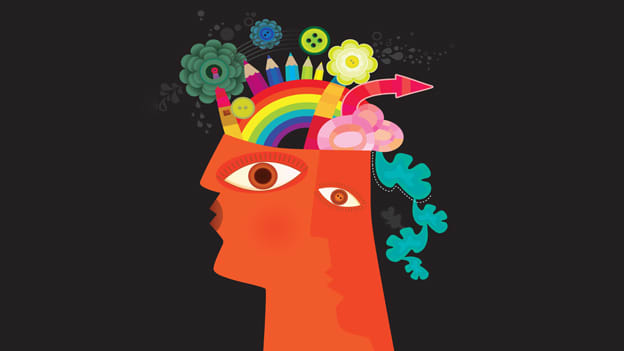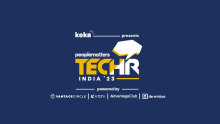Apply service design thinking in your organization

Recently, I went to watch the world-renowned magician P.C. Sorcar’s magic show. It rekindled memories of my childhood when as a child after watching his first live show, I too had a burning desire to move things with my hand and play mind tricks. I would stare really hard at the plate at the dining table, trying to lift it or look at my homework and wave my hands muttering 'abracadabra' and anticipate the page will get filled with the responses with all my psychokinetic might. All my hopes would crash in a few minutes as nothing would happen. All I managed was to learn few small tricks from different books, but my dream to make things fly with a glare, to make magic happen, was wishful thinking.
By the time the Harry Potter movie series hit the theaters, I had overcome my childhood fantasies. Though I was mesmerized and would immerse myself completely in the film, I started focusing on the storytelling techniques, the chemistry of the front stage actors having the ability to hold the audience captive and leave wanting for more. I also wondered about the diverse talents and brains that got together in the backstage to make this visual treat a reality.
Fast forward to today, as a CEO, entrepreneur and business head I need to adapt and adjust to an unpredictable world of business. Today, the source of competition and disruption is not just other products, services of other brands but is in the form of technology, channels to market, increased customer expectations, government policies, supply chains, and a multi-generational talent.
I wish again that I had that magic wand and am glad that this time, unlike many of my counterparts I know the secret sauce to survive in today’s complex world.
To generate, embrace and execute new to survive and eventually thrive - we need a creative and capable workforce. The stakeholders need to understand that customers can view and experience only what's happening in the front stage. To ensure that customers get a WoW experience, the backstage and the behind the scenes team too have a significant role to play. And building this creative and engaged organization does not mean hiring a bunch of designers and folks from the advertising agencies or hosting hack nights.
“It requires design thinking at the core of your business strategy, and this calls for a mindset shift that starts with leadership."
A startup entrepreneur will find it relatively easy as they have no cultural baggage to carry, but for established organizations, it can seem an impossible task to get hundreds and thousands of people to change the way they engage at work every day. And while change could be on the wishlist of many people, in reality, they don’t make change happen frequently.
As a marketer, service design thinking decoder, facilitator, and coach, I often get the question of how to change the culture of a company to be “design thinking-y”? What can make every individual contribute creatively and collaborate with others to arrive at improved solutions, even when there is ambiguity?
So what does P.C. Sorcar, Harry Potter, have to do with getting design thinking off the ground at your organization? They taught us that when you put your mind to it, you can make the impossible happen.
You’re probably thinking, “Whaaaaat are you JOKING? Shut up. NEXT!” But hear me out.
Most often, when individuals get exposed to design thinking processes, they can’t resist the urge to apply the techniques without being clear of what they’re trying to achieve with design thinking in the first place. They want to solve a problem, by following a process, ticking the checkboxes and expect magic to happen. But without changing the way they think, they end up lackluster results and start blaming the consultant or the design team.
“Design thinking is becoming solution-focused, and not problem focused. The real magic of design thinking mindset is whole-brain creative thinking drawing upon imagination, intuition, logic and reasoning to explore possibilities to find desirable outcomes to meet customer expectations.”
Our actions are expressions of our attitudes and mindsets. So the easiest way to start changing how people act is changing the way they think. You can’t expect people to overhaul the way they work overnight entirely. As a leader, you can be a role model by demonstrating the change you want to see through your own behaviors and mindsets.
To get a feel, you may start practicing these simple design thinking mindsets within your organization.
MAKE IT HUMAN
Get Out of Comfort Zone - Put Yourself In Other’s Shoes – Take The Lead, Approachable, Help The Team Navigate Ambiguity, Stay Present And Engaged And Ask The Right Questions, Learn from Mistakes
We are wrong if we assume that creating empathy maps and talking to customers, putting employees first and customers second are enough to get us thinking from a human perspective.
Mindset Shift: Relook at the problem from the customers viewpoint instead of thinking of a problem from your business/department or your point of view. Now challenge your loyalties and long-held assumptions and biases, emotions.
Ask Yourself: How do I get me and my team to think from other’s perspective? Can we articulate why the customer is upset? What are the possible solutions?
Apply It: Challenge yourself and your team to think of four ways you can learn from the customer’s point of view when you encounter a new problem. For example, you could strike a live conversation with real customers and end users, browse online or social media or review sites to get a sense of what customers are thinking and feeling, analyze past complaints and resolutions or have a casual chat with the support staff of another company.
Compile the findings and hear everyone’s story representing the customer, arrive at the solution and implement it. A revisit to check if this problem is reoccurring and iterate. Soon, your team realizes the benefits of bringing the customer in this problem-solving technique and start to practice it.
MAKE IT PRACTICAL
Assess The Situation, Set The Purpose, Set SMART Goals, Set The Right Conditions For Creativity To Thrive, Explore All Possibilities, Do Necessary Course Corrections, Break Down The Silos
Ideas are only meaningful if they are put into action. The challenge is, most of us are trained and wired only to realize on what we are told to do.
Mindset Shift: Make it practical and real and make the ideas tangible, keeping in mind the ground realities, set a roadmap. To convert ideas into actions, it's important that one can see, relate, react, critique, share and help refine it – whether it’s in the sketching, storyboarding, prototyping, testing or implementing stage.
Ask Yourself: What can I do right now to bring this idea/thought/discussion to life? Which idea should I and my team work on?
Apply It: In your next brainstorm or creative problem-solving session, ask all participants to draw what's coming in their mind for a particular idea or concept, and ask them to detail the intricacies. Once all have shared, conduct a popularity vote and if required ask WHAT, WHY, WHERE, WHEN, WHO & HOW questions to validate the responses, and ensure it's not favoring a particular person’s thinking. If necessary so some secondary research. All this will help make the discussion more tangible, realistic and actionable.
MAKE IT EXCITING
Set The Course For A New Direction, Communicate Transparently, Make The Change Desirable, Push Your Limits, Take Calculated Risks To Reach Closer To The Set Target
Most organizations reward solutions over creativity, courage, and curiosity. And thus we all are tempted to take shortcuts to minimize the sweat, sacrifices, failures and tears. So when presented with a problem; we often jump immediately to the first solution that crops up, and the problem-solving stops here.
Mindset Shift: Explore all possibilities and do some experiments before finalizing on the innovative solution.
Ask Yourself: Whats in it for my team and me to solve this particular problem or challenge?
Apply It: The next time you and the team need to arrive at a solution, set a timer and brainstorm possible alternatives. Build this team which has representatives fro the front stage, backstage, behind the scenes and if possible the customer. Ask each team member to share, how will it make their and customers life easier. You would be surprised with the different views and avenues for further exploring and solve the original problem.
With secret sauce at your disposal to redesign the way you organization thinks and acts, find few tips for affecting the magic of change:
- Take baby steps – Changing the entire organization overnight is not realistic. So take baby steps and let the impact ripple down.
- Recruit help from within – find the like-minded people, your partner in crime who also want to change. Train them and make them your advocates.
- Address the stakeholder concerns – ease the pressure, as it will take time for people to adjust to new ways of working, minimize the learning curve and get their buy-in and help them arrive at their a-ha moments. Make the benefits relevant and communicate the success stories.
- Continuously assess and review the impact – this helps you ensure that you are on track and prevent making costly mistakes.
This the only tip of the iceberg. Changing an organization is no easy job. As a leader by walking the talk, you can spread this magic, and new habits will form. Celebrate the small wins and prod people to make the bigger change, by making them realize the benefits. I can’t promise that you’ll ever be able to do what P.C.Sorcar and Harry Potter do (let’s be real, that will never happen), but embracing the right mindsets – your organization can shape the service experiences that works for solid business outcomes. Be patient, but start today!












